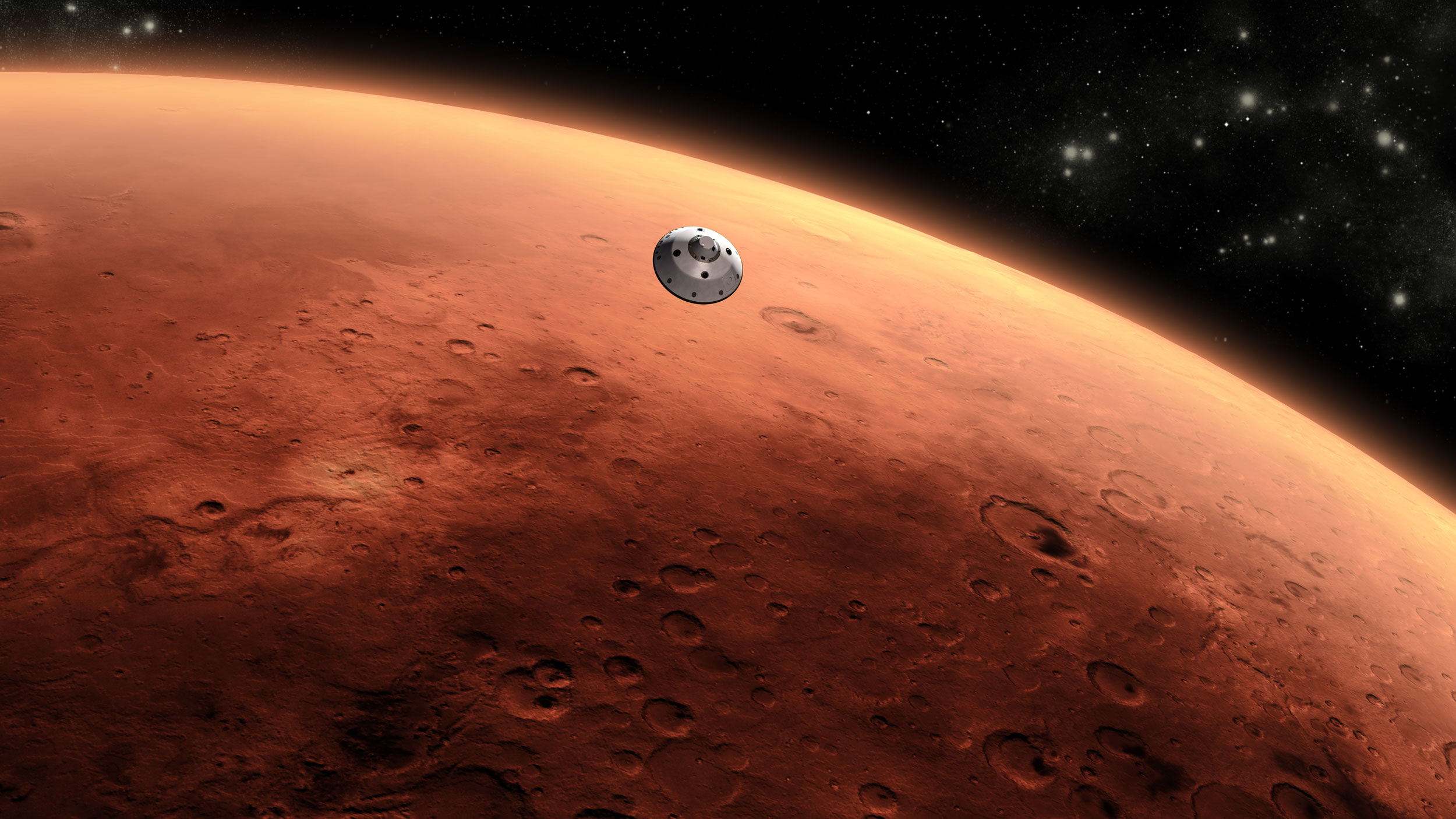
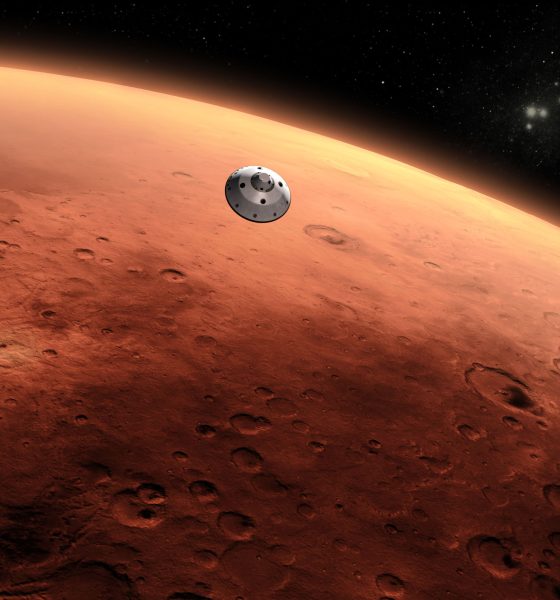
Space
Famous Mars meteorite discovered with interesting, new organics
Scientists are looking at Mars in a whole new way. That’s because a new analysis of a famous piece of the red planet has revealed something exciting: traces of nitrogen.
Nitrogen, together with organic molecules — carbon-rich molecules that are considered the building blocks of life as we know it — have been spotted in the Alan Hills meteorite, a new study suggests.
The Alan Hills sample was discovered in Antarctica in 1984 and is one of the largest, most famous meteorites from Mars. That’s because it sparked quite the controversy when it was first found. Some of the first analysis of the rock suggested that the sample contained microbial fossils. This led to rumors that scientists might have spotted their firsts signs of Martian life.
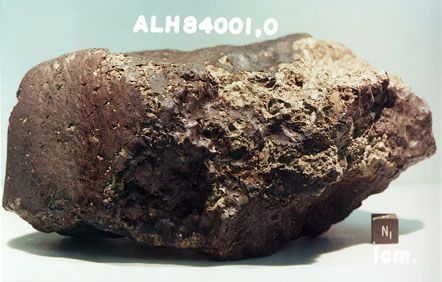
Over billions of years, Mars has been stripped of its atmosphere, and as such, its surface is subjected to cosmic radiation as well as blasts from interstellar objects. Sometimes the blasts are so powerful that chunks of rock are ejected into space and eventually land on other planetary bodies such as the moon or Earth.
Scientists estimate that the Alan Hills sample arrived on our planet at least 13,000 years ago and that the sample itself is around 4 billion years old. This 4-lb. chunk of rock is the oldest known meteorite from Mars that we’ve found.
Mars, as we know it today, appears to be a pretty inhospitable place for life. But that wasn’t always the case. Mars was once a lush, wet world, and new evidence points to the fact that an ancient chunk of the red planet is harboring traces of organic molecules.
These types of carbon-rich molecules are the building blocks of life. Their presence does not necessarily qualify as a definitive sign that life was once present on Mars, but it bolsters the case. That’s because this particular sample doesn’t just contain a random set of organic molecules; it contains traces of nitrogen explicitly.
And nitrogen is something that life here on Earth depends on.
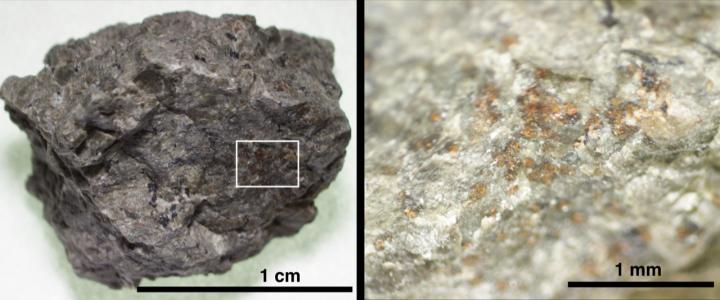
The Allan Hills 84001 meteorite is a famous hunk of Martian rock that was found in a region of Antarctica called Allan Hills in 1984. The new study, conducted by a group of researchers from the Japanese Space Agency (JAXA), indicates that not only does the sample contain nitrogen, but that the nitrogen was found within carbonate minerals in the rock. These types of minerals typically form in groundwater, so this could be further evidence to support the notion that Mars was once a wet world.
To make this discovery, the team from JAXA, led by Mizuho Koike, used a technique called X-ray spectroscopy to determine that the nitrogen was hiding in the carbonate minerals. Even though the Alan Hills sample has been in the news before, this was the first definitive evidence that there was nitrogen in the meteorite.
This discovery does not mean that the researchers have found signs of life on Mars. The presence of nitrogen and the carbonate minerals can be produced both biotically and abiotically. Scientists do not yet know how these molecules formed, but they have ruled out that they were somehow contaminated by Earth minerals.
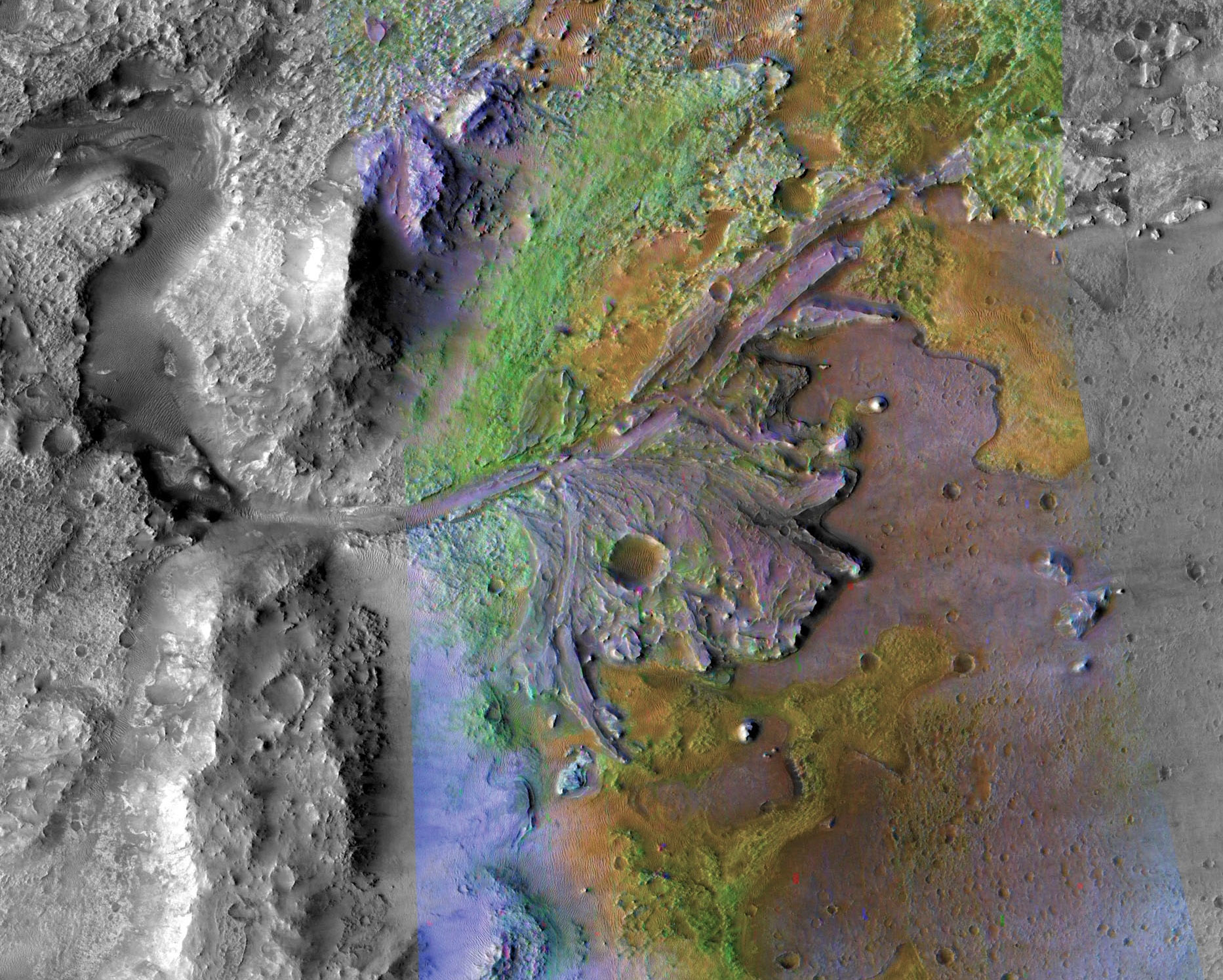
But how were they formed? According to the researchers, there are two possibilities: either the organics originated on Mars, or they came from outside the planet. Mars was bombarded by comets and other rock and dust particles, and it’s possible that some of them may have been trapped inside the minerals as they formed.
Researchers will soon have other Martian rocks to compare these results to. This summer, NASA is launching the Perseverance Mars rover. The six-wheeled robot will land in on Mars in a region called Jezero Crater. The agency selected this spot as the landing site because it’s believed to be an ancient river delta and could contain minerals known to preserve microfossils here on Earth.
The rover’s task will be to search for signs of a past life as well as to bag up samples that will be sent to Earth on later missions. Once researchers have access to pristine Martian samples, they will be able to expand their knowledge of the red planet. And perhaps even be able to tell if Mars ever hosted life.

News
SpaceX shades airline for seeking contract with Amazon’s Starlink rival

SpaceX employees, including its CEO Elon Musk, shaded American Airlines on social media this past weekend due to the company’s reported talks with Amazon’s Starlink rival, Leo.
Starlink has been adopted by several airlines, including United Airlines, Qatar Airways, Hawaiian Airlines, WestJet, Air France, airBaltic, and others. It has gained notoriety as an extremely solid, dependable, and reliable option for airline travel, as traditional options frequently cause users to lose connection to the internet.
Many airlines have made the switch, while others continue to mull the options available to them. American Airlines is one of them.
A report from Bloomberg indicates the airline is thinking of going with a Starlink rival owned by Amazon, called Leo. It was previously referred to as Project Kuiper.
American CEO Robert Isom said (via Bloomberg):
“While there’s Starlink, there are other low-Earth-orbit satellite opportunities that we can look at. We’re making sure that American is going to have what our customers need.”
Isom also said American has been in touch with Amazon about installing Leo on its aircraft, but he would not reveal the status of any discussions with the company.
The report caught the attention of Michael Nicolls, the Vice President of Starlink Engineering at SpaceX, who said:
“Only fly on airlines with good connectivity… and only one source of good connectivity at the moment…”
CEO Elon Musk replied to Nicolls by stating that American Airlines risks losing “a lot of customers if their connectivity solution fails.”
American Airlines will lose a lot of customers if their connectivity solution fails
— Elon Musk (@elonmusk) December 14, 2025
There are over 8,000 Starlink satellites in orbit currently, offering internet coverage in over 150 countries and territories globally. SpaceX expands its array of satellites nearly every week with launches from California and Florida, aiming to offer internet access to everyone across the globe.
Currently, the company is focusing on expanding into new markets, such as Africa and Asia.
News
Tesla hints at Starlink integration with recent patent
“By employing polymer blends, some examples enable RF transmission from all the modules to satellites and other communication devices both inside and outside the vehicle.”

Tesla hinted at a potential Starlink internet terminal integration within its vehicles in a recent patent, which describes a vehicle roof assembly with integrated radio frequency (RF) transparency.
The patent, which is Pub. No U.S. 2025/0368267 describes a new vehicle roof that is made of RF-transparent polymer materials, allowing and “facilitating clear communication with external devices and satellites.”
Tesla believes that a new vehicle roof design, comprised of different materials than the standard metallic or glass elements used in cars today, would allow the company to integrate modern vehicular technologies, “particularly those requiring radio frequency transmission and reception.
Tesla has recently filed a US patent application on integrating RF transparent materials into the roof structure.
“facilitating clear communication with external devices and satellites”
Tesla fleet is getting @Starlink connectivity integration soon. LFG @Tesla @elonmusk… pic.twitter.com/bLa8YtPLd1
— Chansoo Byeon (@Chansoo) December 9, 2025
Instead of glass or metallic materials, Tesla says vehicles may benefit from high-strength polymer blends, such as Polycarbonate, Acrylonitrile Butadiene Styrene, or Acrylonitrile Styrene Acrylate.
These materials still provide ideal strength metrics for crashworthiness, stiffness for noise, vibration, and harshness control, and are compliant with head impact regulations.
They would also enable better performance with modern technologies, like internet terminals, which need an uninterrupted signal to satellites for maximum reception. Tesla writes in the patent:
“By employing polymer blends, some examples enable RF transmission from all the modules to satellites and other communication devices both inside and outside the vehicle.”

One of the challenges Tesla seems to be aware of with this type of roof design is the fact that it will still have to enable safety and keep that at the forefront of the design. As you can see in the illustration above, Tesla plans to use four layers to increase safety and rigidity, while also combating noise and vibration.
It notes in the patent that disclosed examples still meet the safety requirements outlined in the Federal Motor Vehicle Safety Standards (FMVSS).
Starlink integrated directly into Tesla vehicles would be a considerable advantage for owners. It would come with a handful of distinct advantages.
Initially, the inclusion of Starlink would completely eliminate cellular dead zones, something that is an issue, especially in rural areas. Starlink would provide connectivity in these remote regions and would ensure uninterrupted service during road trips and off-grid adventures.
It could also be a critical addition for Robotaxi, as it is crucial to have solid and reliable connectivity for remote monitoring and fleet management.
Starlink’s growing constellation, thanks to SpaceX’s routine and frequent launch schedule, will provide secure, stable, and reliable internet connectivity for Tesla vehicles.
Although many owners have already mounted Starlink Mini dishes under their glass roofs for a similar experience, it may be integrated directly into Teslas in the coming years, either as an upgrade or a standard feature.
Investor's Corner
SpaceX IPO is coming, CEO Elon Musk confirms
However, it appears Musk is ready for SpaceX to go public, as Ars Technica Senior Space Editor Eric Berger wrote an op-ed that indicated he thought SpaceX would go public soon. Musk replied, basically confirming it.

Elon Musk confirmed through a post on X that a SpaceX initial public offering (IPO) is on the way after hinting at it several times earlier this year.
It also comes one day after Bloomberg reported that SpaceX was aiming for a valuation of $1.5 trillion, adding that it wanted to raise $30 billion.
Musk has been transparent for most of the year that he wanted to try to figure out a way to get Tesla shareholders to invest in SpaceX, giving them access to the stock.
He has also recognized the issues of having a public stock, like litigation exposure, quarterly reporting pressures, and other inconveniences.
However, it appears Musk is ready for SpaceX to go public, as Ars Technica Senior Space Editor Eric Berger wrote an op-ed that indicated he thought SpaceX would go public soon.
Musk replied, basically confirming it:
As usual, Eric is accurate
— Elon Musk (@elonmusk) December 10, 2025
Berger believes the IPO would help support the need for $30 billion or more in capital needed to fund AI integration projects, such as space-based data centers and lunar satellite factories. Musk confirmed recently that SpaceX “will be doing” data centers in orbit.
AI appears to be a “key part” of SpaceX getting to Musk, Berger also wrote. When writing about whether or not Optimus is a viable project and product for the company, he says that none of that matters. Musk thinks it is, and that’s all that matters.
It seems like Musk has certainly mulled something this big for a very long time, and the idea of taking SpaceX public is not just likely; it is necessary for the company to get to Mars.
The details of when SpaceX will finally hit that public status are not known. Many of the reports that came out over the past few days indicate it would happen in 2026, so sooner rather than later.
But there are a lot of things on Musk’s plate early next year, especially with Cybercab production, the potential launch of Unsupervised Full Self-Driving, and the Roadster unveiling, all planned for Q1.








